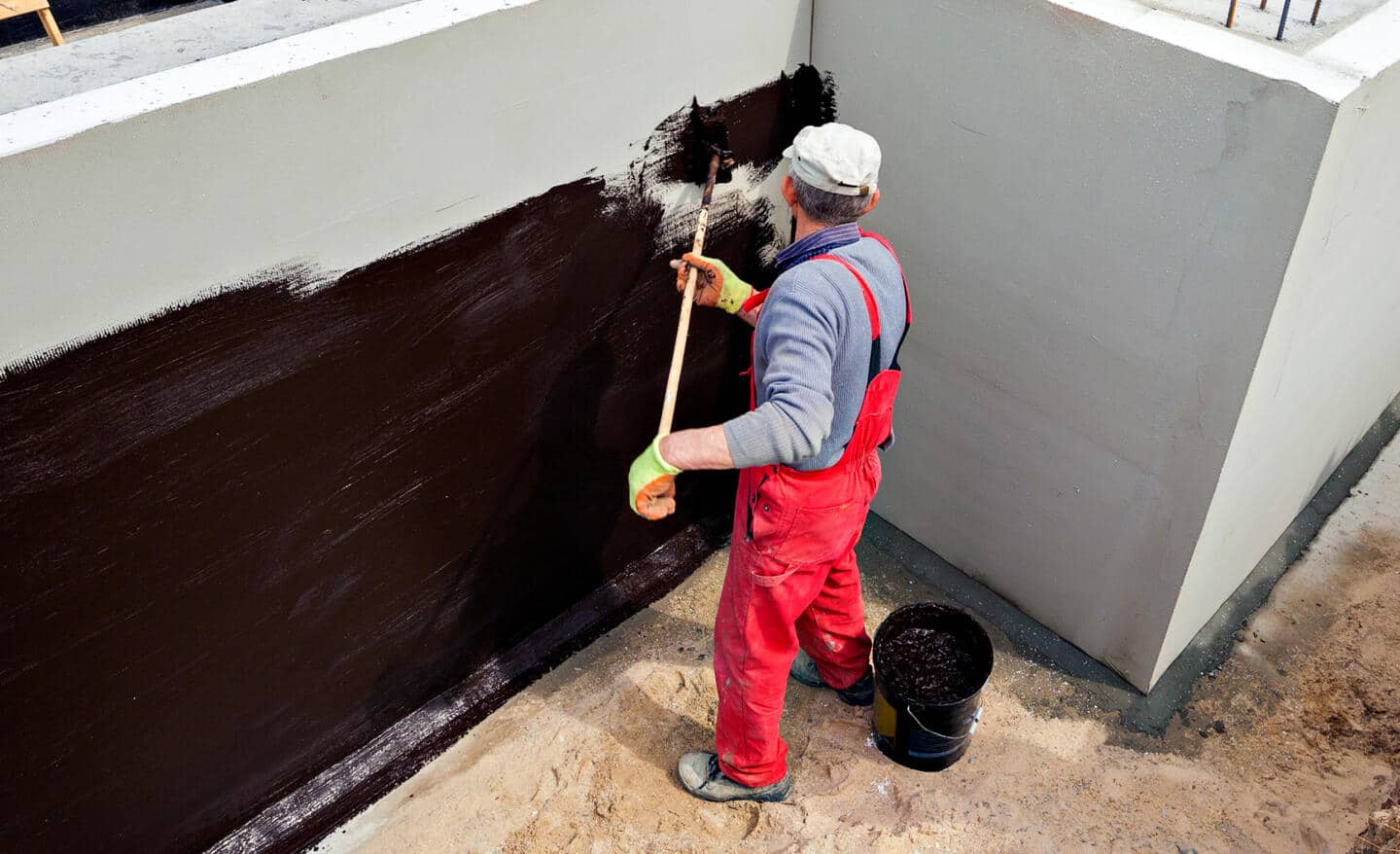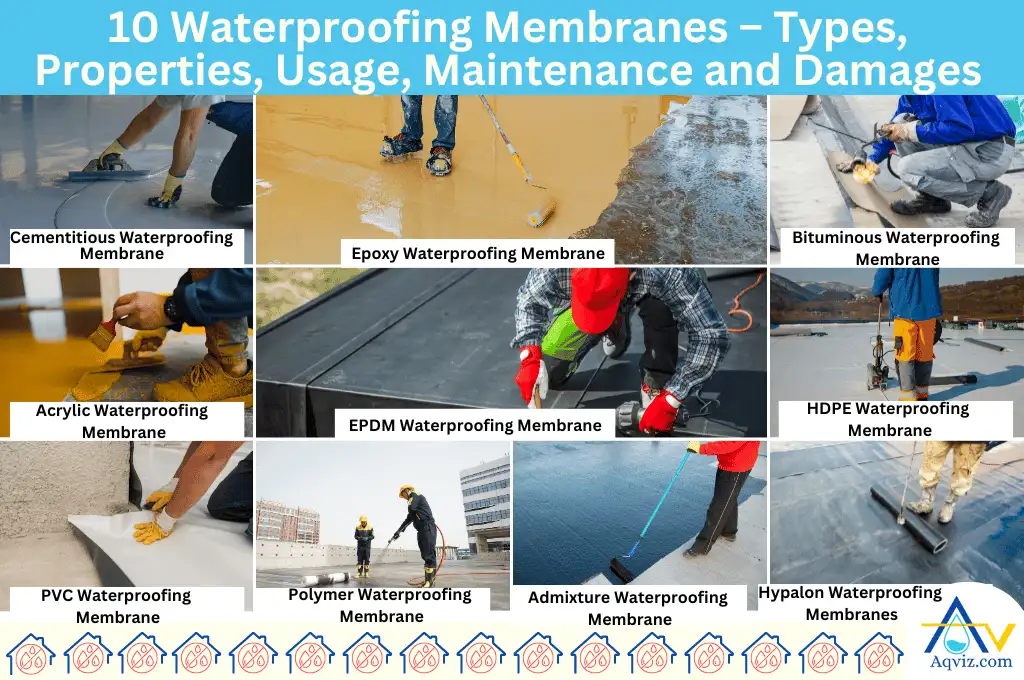How Waterproofing Functions: A Comprehensive Appearance at Techniques and Technologies
Waterproofing is crucial for securing structures from moisture-related damages. It involves various strategies and technologies that develop obstacles against water breach. Standard techniques, such as compressed clay, coexist with modern-day advancements like liquid-applied membranes. Understanding the subtleties of these techniques is vital for reliable application. Nevertheless, the performance of any type of waterproofing solution hinges not just on the methods used however additionally on continuous maintenance and examination. What are the essential factors that influence long-lasting efficiency?
Recognizing the Fundamentals of Waterproofing
Waterproofing is an important procedure that protects frameworks from water invasion, which can lead to substantial damages with time. This technique entails the application of different materials and techniques designed to create an obstacle versus wetness. The primary goal is to stop water from permeating surfaces, which can create deterioration, mold and mildew growth, and architectural instability.Various aspects influence the selection of waterproofing method, including the type of structure, its place, and ecological problems. Recognizing the physics of water movement and the buildings of different materials is crucial in selecting an effective waterproofing solution.Effective waterproofing not only safeguards structures but also enhances their durability and honesty. Commonly, it is incorporated into the design phase of construction to guarantee detailed protection. As understanding of water-related concerns grows, the importance of recognizing waterproofing principles comes to be increasingly clear to engineers, home builders, and homeowner alike.
Standard Waterproofing Approaches
Conventional waterproofing approaches have actually been utilized for centuries, depending on tried and true methods and materials to guard structures from water damage. Among the earliest methods involves using clay, which, when compressed, creates an all-natural obstacle versus dampness. Furthermore, asphalt, a sticky, black material originated from oil, has been utilized for its waterproof residential or commercial properties, typically related to roofings and foundations.Another technique includes the application of lime-based plasters, which provide a breathable layer that enables dampness to escape while avoiding water ingress. Thatch roofing, a standard method still seen in some societies, offers excellent waterproofing as a result of its tightly packed straw layers.Moreover, using stone and brick has actually been famous, as these materials are naturally resistant to water when appropriately mounted. On the whole, typical waterproofing methods highlight the value of picking appropriate materials and building and construction techniques to enhance longevity versus water invasion.
Modern Waterproofing Technologies
Innovations in modern-day waterproofing innovations have revolutionized the means frameworks are shielded from water damages. Cutting-edge strategies such as liquid-applied membranes and advanced sealants have improved the performance and flexibility of waterproofing services. These modern technologies enable seamless application, reducing the risk of leakages and ensuring thorough insurance coverage over complicated surfaces.Moreover, the assimilation of wise modern technologies, such as wetness sensing units and automated tracking systems, makes it possible for real-time evaluation of waterproofing performance. This proactive approach helps with prompt maintenance and minimizes lasting repair costs.Additionally, improvements in spray-applied coatings offer fast application and outstanding attachment, adapting to various substrates while offering durable defense. Methods like polymer-modified systems additionally improve flexibility and toughness, making them suitable for varied environments. Overall, modern waterproofing technologies not just reduce water breach but additionally contribute to the longevity and sustainability of structures, noting a considerable shift in the sector.
Products Utilized in Waterproofing
The effectiveness of waterproofing remedies greatly counts on the materials utilized in their application. Various materials are employed to develop barriers versus water access, each with distinct residential properties fit for various environments. Frequently used materials consist of membranes, coverings, and sealants.Liquid-applied membranes, often made from polyurethane or acrylic, develop a smooth obstacle that adapts to complex surface areas. Sheet membranes, generally constructed from rubber or polycarbonate, offer toughness and are ideal for larger areas. In addition, cementitious waterproofing products, made up of cementitious compounds, supply superb attachment and flexibility.Sealants made from silicone or polyurethane are crucial for joints and joints, making sure extensive security. Additionally, advanced materials, such as geo-composite membrane layers, combine several functions, improving performance. In general, the choice of waterproofing materials is vital in accomplishing lasting and effective water resistance, customized to details task needs and ecological problems.
Typical Applications of Waterproofing
Waterproofing plays a necessary function in different sectors, making sure the durability and honesty of structures. Common applications include household remedies that secure homes, business framework that safeguards businesses, and commercial setups that require durable security versus dampness. Recognizing these applications highlights the importance of waterproofing in maintaining both safety and performance throughout different settings.
Residential Waterproofing Solutions
Lots of property owners deal with difficulties with wetness intrusion, making effective property waterproofing remedies essential. Various techniques exist to address this issue, consisting of inside and outside waterproofing systems. Inside remedies often entail the application of sealers and finishes to basement wall surfaces, which help stop water seepage. Outside methods commonly consist of the installment of drainage systems and water-proof membranes that divert water away from the foundation.Additionally, homeowners may think about sump pumps to remove water buildup and dehumidifiers to control humidity levels. Correct grading and using rain gutters also play an important function in taking care of water flow around the home. By carrying out these methods, homeowners can substantially decrease the danger of water damages and mold and mildew development, making sure a completely dry and safe living atmosphere.

Commercial Infrastructure Security
Reliable waterproofing options play a crucial role in the protection of business facilities. Drainage & waterproofing company Omaha. These methods are crucial for safeguarding buildings, car parking structures, and bridges from water damage, which can compromise structural integrity and cause costly repairs. Usual applications consist of the installment of membrane layers, layers, and sealers that develop barriers against her response wetness seepage. Areas such as basements, roofings, and outside wall surfaces are frequently focused on to guarantee durability and toughness. Furthermore, waterproofing systems can enhance energy performance by avoiding water-related problems that may bring about mold development and deterioration. By executing robust waterproofing steps, residential or commercial property proprietors can shield their financial investments and maintain functional efficiency, inevitably adding to the general sustainability of commercial facilities
Industrial Applications Introduction
While various sectors face distinct difficulties, the need for trustworthy waterproofing options remains a consistent in commercial applications. Industries such as production, building, and power frequently run into environments where moisture exposure can endanger architectural stability and functional efficiency. In manufacturing facilities, waterproofing is critical for shielding machinery and products from water damage. In construction, it safeguards foundations and cellars versus groundwater seepage. The energy market counts on waterproofing for the protection of tools in hydroelectric plants and bituthene 4000 overseas structures. Furthermore, food processing markets make use of waterproofing to guarantee hygiene and conformity with safety and security criteria. On the whole, effective waterproofing solutions are important for enhancing sturdiness, safety and security, and productivity throughout various commercial settings.
Upkeep and Long Life of Waterproofing Solutions
Although waterproofing remedies are created to supply long-lasting security versus wetness breach, routine maintenance is vital to guarantee their efficiency and long life - Foundation waterproofing Omaha. Regular inspections play a considerable role in recognizing potential problems such as fractures, peeling, or indications of water damages. Resolving these problems immediately can avoid further degeneration and pricey repairs.Additionally, cleaning the surface area of waterproof locations assists get rid of dust and particles that might jeopardize the honesty of the waterproofing obstacle. It's likewise a good idea to reapply protective finishings or sealers as recommended by makers to maintain perfect performance. Ecological aspects, such as UV exposure and extreme climate condition, can affect the lifespan of page waterproofing materials, making regular evaluation essential
Frequently Asked Inquiries
Can Waterproofing Be Applied in Cold Weather Condition?
The concern of applying waterproofing in winter increases concerns about bond and healing. Many items may not carry out at their finest in low temperatures, demanding cautious selection and consideration of details guidelines for efficient application.
Exactly How Long Does Waterproofing Commonly Last?
The period of waterproofing efficiency varies based on materials and ecological elements. Usually, it can last from five to 10 years, however normal upkeep and assessments are necessary to assure peak performance and longevity.
Is DIY Waterproofing Effective and Safe?
The performance and safety and security of do it yourself waterproofing rely on different elements, including material top quality and application method. While some individuals accomplish acceptable outcomes, others might experience problems that compromise long-lasting protection and structural honesty.
What Are the Indicators of Failing Waterproofing?
Signs of stopping working waterproofing include visible water discolorations, peeling off paint, mold and mildew growth, moldy smells, and moisture in walls or ceilings - Water Solutions Omaha. These indications recommend endangered barriers, demanding prompt assessment and possible removal to stop more damage
How Do I Choose the Right Waterproofing Service Provider?
